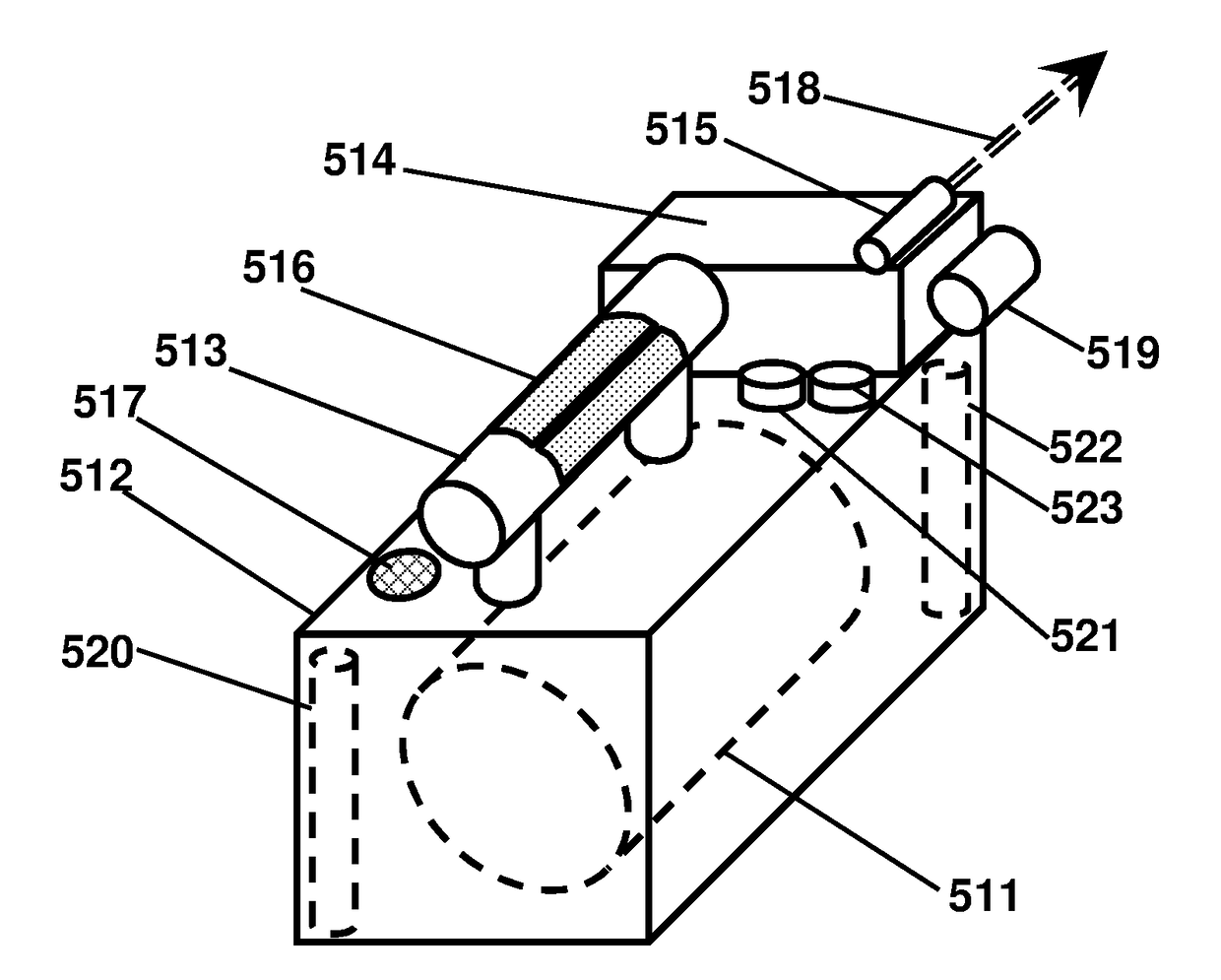Gamma Ray Detector with Two-Dimensional Directionality
a detector and directionality technology, applied in the field of gamma ray detectors, can solve the problems of insufficient large inspection items such as trucks and railcars, difficult detection using current detector technology, and immediate worldwide threat of clandestine nuclear weapons, and achieve the effect of high detection efficiency, high angular precision, and maximum detection area
- Summary
- Abstract
- Description
- Claims
- Application Information
AI Technical Summary
Benefits of technology
Problems solved by technology
Method used
Image
Examples
first embodiment
[0061]the invention comprises a hand-held survey meter, without a central detector. The meter includes a display showing the calculated azimuthal angle of the source, and other data. Operation of the instrument is very simple; the operator rotates the instrument manually, up or down or laterally, according to the indicated azimuthal angle, and thereby converges on the source. The polar angle is not determined and is not necessary in this case, since the operator can find the source simply by following the indicated direction. Normally the operator rotates the instrument slowly, so that it can update the calculated azimuthal angle in real time. If the operator rotates the detector too quickly, the detector axis will likely overshoot the source location; however the system will soon recalculate the azimuthal angle and update the display correctly to point back toward the source. Thus the invention is quite tolerant of operator behavior, quickly and gracefully recovering from overshoot...
second embodiment
[0062]A second embodiment comprises a hand-held survey meter which includes means for determining the detector orientation relative to the ground, such as a multi-axis accelerometer and an electronic compass. In that case, the detector orientation is known, and the polar angle is determined by interpolation between two sets of measurements at different detector orientations. Preferably the two orientations straddle the source; however if the two measurements are both on the same side of the source, a rough estimate of the polar angle can still be obtained by projection.
third embodiment
[0063]the invention comprises a hand-held meter or a fixed-site detector, in which a central detector is mounted in the shield. The central detector is configured to have a directional dependence that is quite different from the scintillator array, due to the central detector being in an axially centered position. By analyzing the scintillator signals and the central detector signals together, the polar angle can be calculated at each detector orientation, that is, without the need for correlating successive measurements at different orientations. For example, a ratio Rsc may be calculated, comprising the maximum scintillator counting rate divided by the central detector counting rate. Or, more preferably, the numerator (Rs) equals the maximum differential plus one-half the second-highest differential observed in the scintillator array, while the denominator (Rc) is the central detector counting rate. When calculated with this simple formula, the ratio Rsc=Rs / Rc is closely correlate...
PUM
| Property | Measurement | Unit |
|---|---|---|
| azimuthal angle | aaaaa | aaaaa |
| angle | aaaaa | aaaaa |
| thicknesses | aaaaa | aaaaa |
Abstract
Description
Claims
Application Information
 Login to View More
Login to View More - R&D
- Intellectual Property
- Life Sciences
- Materials
- Tech Scout
- Unparalleled Data Quality
- Higher Quality Content
- 60% Fewer Hallucinations
Browse by: Latest US Patents, China's latest patents, Technical Efficacy Thesaurus, Application Domain, Technology Topic, Popular Technical Reports.
© 2025 PatSnap. All rights reserved.Legal|Privacy policy|Modern Slavery Act Transparency Statement|Sitemap|About US| Contact US: help@patsnap.com



